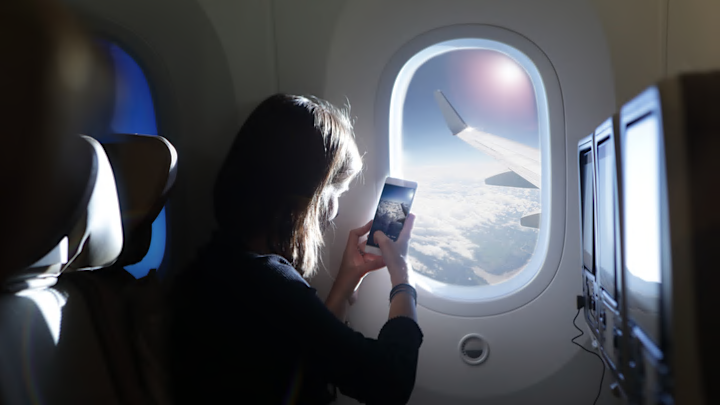While some passengers might be too terrified (or sedated) to notice, others may wonder why the windows that line airplane rows are round. Windows in the home are rectangular; car partitions are angled, but mostly rectangular. Why don’t planes follow suit?
It’s not an aesthetic choice. Airplanes used to have square windows. And they wound up crashing because of them.
When commercial airlines graduated to faster and larger jets beginning in the 1950s, planes would sometimes essentially disintegrate midair. Two of them, both de Havilland Comets, fell apart within months of one another in 1954 and killed a total of 56 passengers. Investigators traced the flaw to the squared-off corners of windows, which collect the stress of a pressurized cabin and can be prone to fracture. During one test, the Royal Aircraft Establishment found that up to 70 percent of the airplane’s stress was concentrated on the window's sharp angles.
Circular windows, which are able to disperse that pressure more evenly, immediately became the new standard in passenger aviation. And for every one you see, there are actually three panes at work: one bears the burden of pressurization, another inner pane acts as a failsafe in case the outer pane fails—which is rare—and one “scratcher” pane faces the occupant, so that you can smudge and dirty it up to your heart’s content.
As for that little hole at the bottom: It’s there to make sure the working pane takes the brunt of the air pressure, maintaining the emergency pane for, well, emergencies.
Mystery solved.
Have you got a Big Question you'd like us to answer? If so, let us know by emailing us at bigquestions@mentalfloss.com.
Read More About Air Travel:
A version of this story was published in 2016; it has been updated for 2024.
